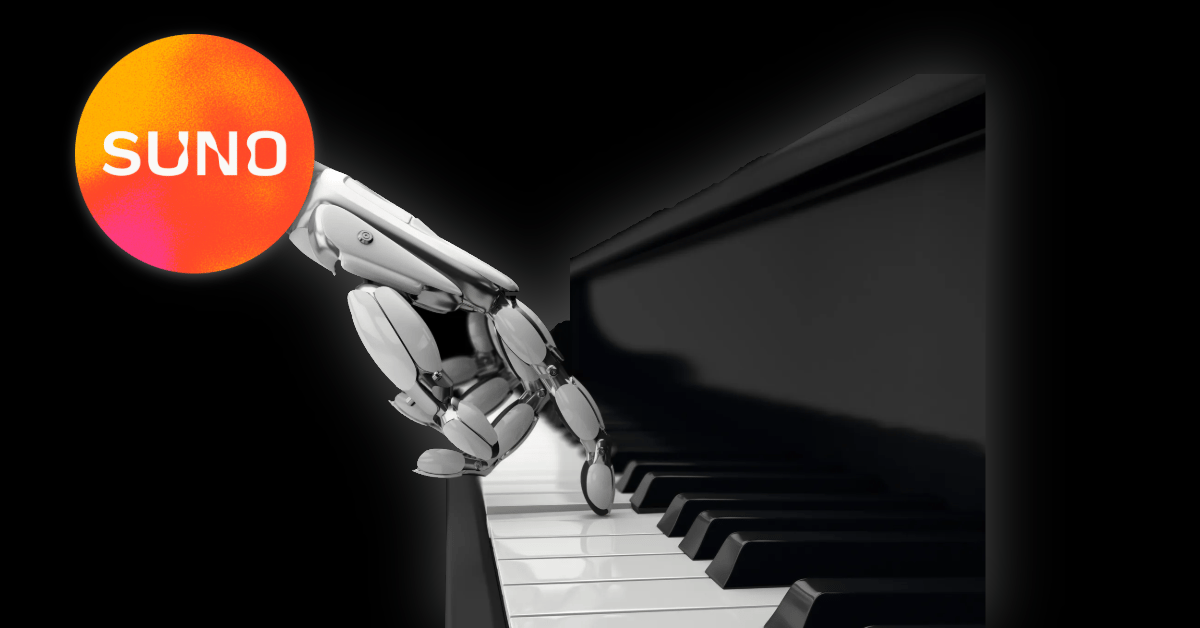
I just found out that AI music generator Suno is in talks to raise over $100 million at a valuation north of $2 billion.
That's four times what it was worth a few months ago.
You might remember Suno as the company being sued by major record labels like Universal and Warner for alleged copyright infringement last year. By June, those same labels were reportedly in talks to settle and license their works to Suno in exchange for equity.
And now, in a surreal bit of timing, Spotify has announced new “responsible AI” partnerships with Sony, Universal, and Warner to “empower artists and songwriters.” Empower. Right. Because nothing says “creative empowerment” like partnering with the same tech that’s making human artists obsolete.
I guess it’s safe to say the music industry is no longer fighting the machine. Instead, it’s merging with it.
It’s a familiar pattern: the labels sued Napster, then helped build Spotify. They fought YouTube, then joined it. Now they’re doing the same with AI, overtly “condemning” the theft while quietly investing in it in the background.
What looks like innovation is really just consolidation. And what looks like “responsible AI” is just the latest attempt to make sure the profits of synthetic creativity flow through the same old pipes. This is the part that gets under my skin. Because Suno’s story isn’t only about the music. It’s about what I like to call the collapse of creative truth.
What do I even mean by creative truth?
Before we can mourn its collapse, we have to define it. Creative truth is the thing that makes art human. It’s the friction between imagination and limitation. The years spent honing craft, the flaws that become signatures, the stubborn pursuit of something new. It’s the moment you can feel a person behind what you’re seeing or hearing—their taste, their pain, their curiosity.
AI-generated work, by contrast, is the opposite of that. It is imitation trained at scale. A formulaic process built on existing data, optimised to produce something statistically pleasing.
Where human creativity is an act of discovery, AI creativity is an act of averaging.
That’s the difference between art and content. Art reveals something about the human condition. Content fulfils a condition in the algorithm.
And somewhere along the way, the music industry, like most of the internet, stopped cultivating art and started mass-producing content. AI isn’t an anomaly in that process. It’s the logical next step.
If you trace the industry’s behaviour over the past two decades, you can see the gradual erosion of creative truth in real time.
Napster shattered the concept of scarcity, and wasn’t just a piracy problem; it was a psychological one. Napster taught consumers that music was an infinite, weightless thing; a utility, not a creation. The labels’ response was to double down on control, then ultimately surrender to the inevitability of access.
Spotify normalised that shift. When the labels licensed their catalogues to streaming platforms, they moved from selling discrete works of art (albums, singles, CDs) to selling access to a limitless library.
Scarcity was gone. Ownership disappeared.
The emotional and economic value of music was diluted into the monthly fee for convenience. YouTube took it further. In exchange for exposure, artists gave their work to a platform that paid them fractions of a cent while training audiences to expect everything for free.
Music became content. Background noise. Something to score your vlog or your workout. Its value was in its ubiquity, not its authorship.
And now, the final act. AI completes the circle.
If Napster made music non-scarce, and YouTube made it low-value, Suno makes it no-cost. A limitless, frictionless supply of synthetic songs generated on demand, perfectly optimised, and utterly f*cking hollow.
The record labels, by investing in AI, are no longer just licensing their catalogues. They’re buying into the machine that devalues them. They’ve moved from being stewards of creative expression to portfolio managers of algorithmic output.
Welcome, the illusion of creation.
AI tools like Suno function by ingesting and recombining massive quantities of human-made music. They don’t compose so much as simulate, generating soundscapes that evoke familiarity because they are, quite literally, the sum of our past.
It’s creation as compression.
Sure, it’s efficient. Type a prompt, get a ballad.
Bob’s your f*cking uncle. But what’s lost in that exchange is actual meaning, the very human tension between failure and fulfilment that gives art its emotional texture.
The difference between a songwriter struggling with a melody for a year and a user generating a chorus in seconds isn’t just time. It’s truth. And yet, the corporate narrative around this shift sounds almost noble.
Spotify, Sony, Universal, and Warner talk about “responsible AI” and “creative empowerment,” as if these tools are meant to free artists rather than replace them.
But in business language, empowerment often means cost reduction. So in this context, “empowering artists” means “making content creation cheaper, faster, and more predictable.” That’s the sleight of hand: turning creative labour into a data source.
If the same companies own the AI that creates the music and the platforms that distribute it, they don’t just control the supply chain, they control the definition of creativity itself.
They don’t need to nurture artists when they can manufacture output. They don’t need to fund originality when they can monetise imitation. They don’t need proof of talent when they have proof of concept.
For marketers, this is the world we’re inheriting, too.
As AI fills the internet with infinite, frictionless content, audiences will no longer trust in proof, only in pattern. You will not win as a brand if you are merely spewing out an endless stream of Stuff.
You might if you use AI not to automate expression, but to amplify intention.
Because that’s the final paradox: once everything can be faked, the only thing that matters is what was meant.
-Sophie Randell, Writer
Not going viral yet?
We get it. Creating content that does numbers is harder than it looks. But doing those big numbers is the fastest way to grow your brand. So if you’re tired of throwing sh*t at the wall and seeing what sticks, you’re in luck. Because making our clients go viral is kinda what we do every single day.
